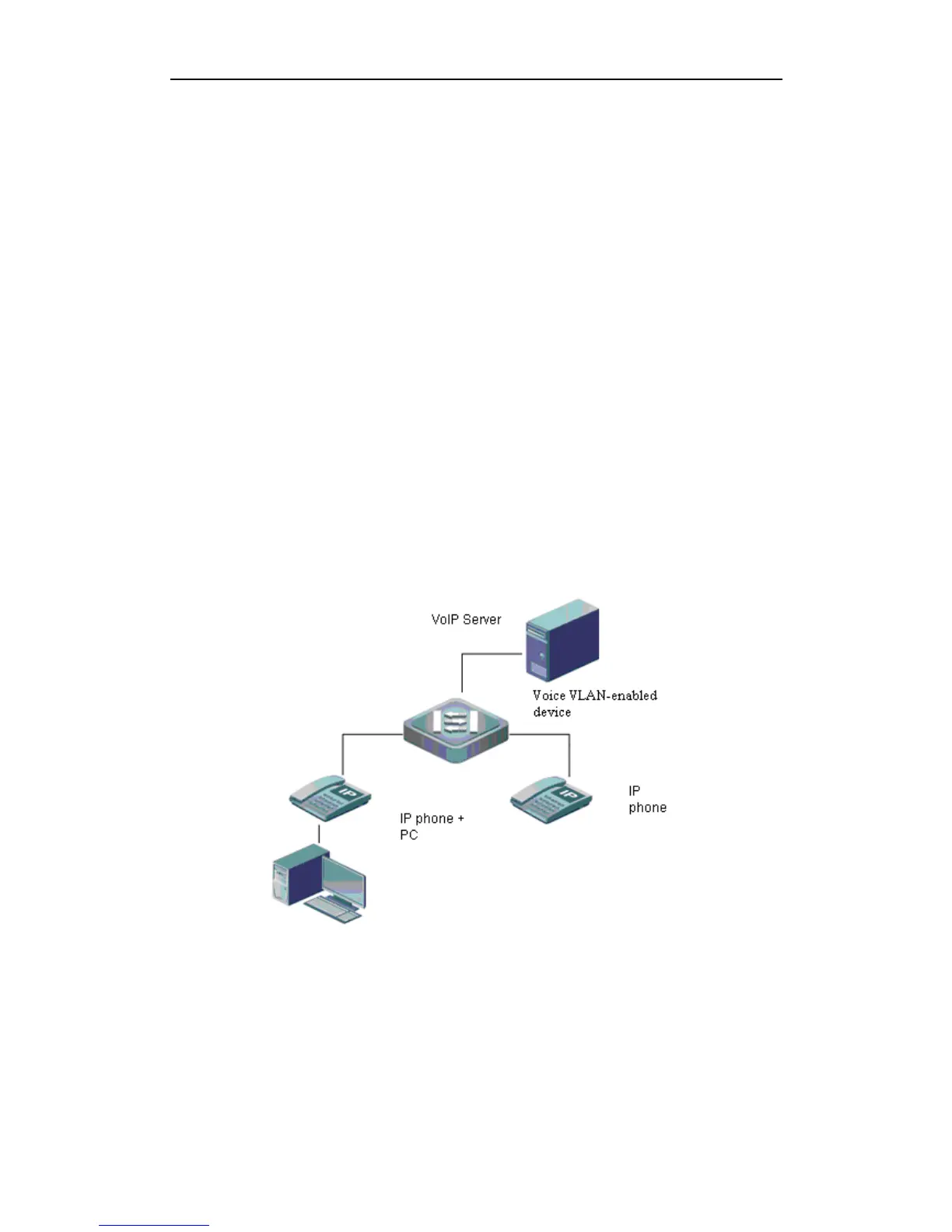Configuration Guide Voice VLAN Configuration
Voice VLAN Configuration
Introduction to Voice VLAN
Overview
With the continual development of technology, IP phone is being used more and
more widely. It converts analog signals into digital signals which are transmitted
over the IP network to the receiver. Then, upon the receipt of data packets, the
receiver converts digital signals back to the analog signals. Combined other
voice devices, IP phone offers high capacity and low cost voice communications
solution for users.
Voice VLAN is specially designed for voice streams. By creating a voice VLAN
and adding the ports connecting voice devices to the voice VLAN, users can
centrally transmit voice streams in the voice VLAN, and configure QoS specific
for voice streams to improve the priority of voice stream transmission and
ensure voice quality.
Following figure illustrates the basic networking of Voice VLAN:
Figure 1 Basic Voice VLAN network topology
There are usually two types of connection (see Fig.1 above) between IP phones
and Voice VLAN:
1. IP phones separately access to Voice VLAN with only voice streams
transmitted. This type of connection is usually applied to IP phones
arrangement in meeting rooms or occasions where PC is not necessary for data
processing.

